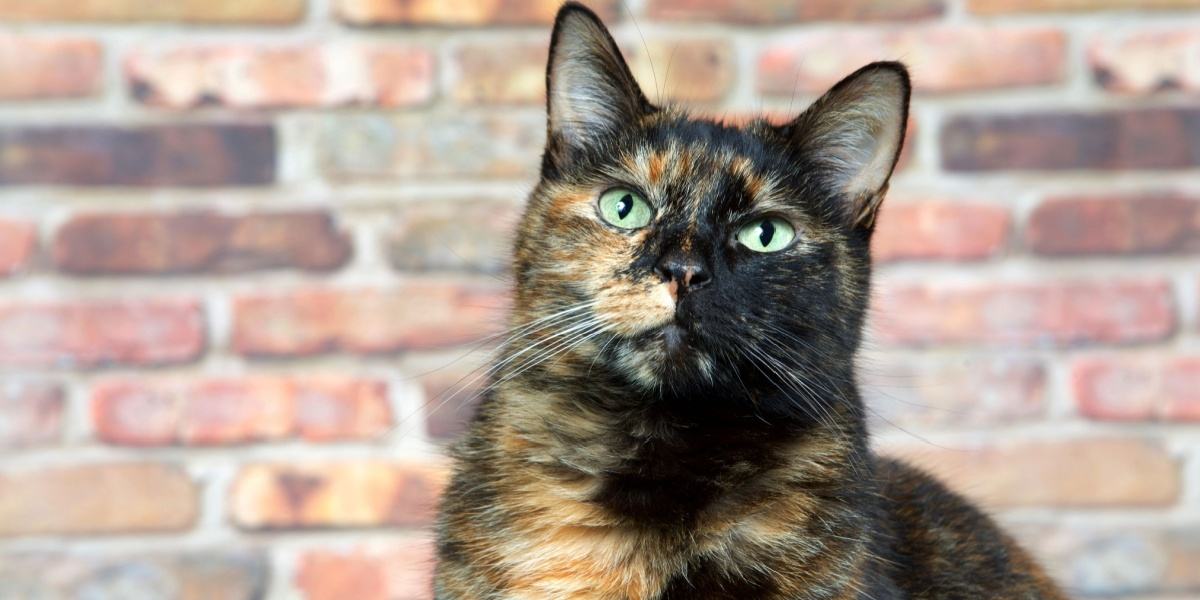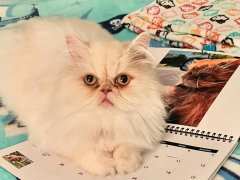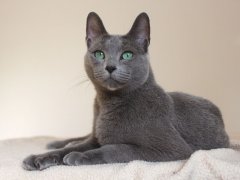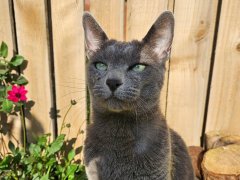
Sheila Fitzgerald / Shutterstock.com
Cats come in many beautiful and unique colors and patterns, some more common than others. ‘Torbie’ refers to a tabby tortoiseshell color pattern.
A torbie cat displays patches of the tortoiseshell pattern and the tabby pattern. Not only is torbie one of the rarest color patterns seen in cats, some people say that torbie cats have unique personalities.
Want to learn some facts about torbie cats? Let’s look more closely at some coat color patterns in cats, and what that might mean for their personality, color and temperament.
5 Facts About Torbie Cats You Probably Didn’t Know
Torbie cats aren’t hugely common, and the unique nature of their coat pattern adds to their air of mystery. But do they have any other special traits? Let’s look at some interesting facts about torbie cats that you may not have heard before.
1. A Torbie Cat Is Not a Specific Breed
The term ‘torbie’ refers to a pattern, not a breed, and this interesting coat type can appear in many breeds and mixed breeds. Any breed that comes in the tabby or tortoiseshell patterns can also come in the torbie pattern. Some cat breeds that can come in torbie include the American Shorthair, British Shorthair, Cornish Rex, and Maine Coons.
2. Torbie Cats Are Almost Always Female
Almost all tortoiseshell cats are female, which means almost all torbie cats are also female. For a cat to have the tortoiseshell pattern, they must have two X chromosomes (XX), each carrying the different alleles needed to create the tortoiseshell color pattern. Two XX chromosomes always make a cat female (males have one X and one Y chromosome), so the tortoiseshell pattern is only seen in female cats.
In very rare cases, tortoiseshell or torbie kittens can be born male. This may occur if a cat has Klinefelter’s syndrome, which causes male cats to have three chromosomes (XXY). Male torties and torbies are always sterile due to this genetic disorder.
3. Torbie Cats Are Quite Rare
Tortoiseshell cats are somewhat rare, but torbies are even rarer. The patched tabby pattern is one of the least common of the five tabby patterns. The unique coat pattern of the torbie is technically patched tabby mixed with the tortoiseshell pattern, and the combination of these two uncommon patterns makes the torbie a rare sight.
4. Torbie Cats Have Sassy Attitudes
Like tortoiseshell cats, torbie cats have a reputation for being feisty feline divas. In tortoiseshell, this tendency even has a name: tortitude. Since torbies are part tortoiseshell, it makes sense that some torbies display a similar temperament. Whether tortitude and “torbitude” is a real behavior phenomenon or simply a fancy of the human mind is up for debate, but some research supports the idea of a link between a cat’s temperament and their color – let’s call it the “tortitude theory.”
5. Torbie Cats Have One of the Rarest Color Patterns
Torbie cats are special because their fur mixes the stripes of tabby cats with the fiery patches of tortoiseshell cats, creating a unique blend of colors that’s hard to find elsewhere. While tabby and tortoiseshell patterns are beautiful on their own, they become even more striking when they come together in torbie cats.
How To Tell the Difference Between Torbie, Tortie, Calico, and Tabby Cats
Cats come in many beautiful colors and patterns: some common and some rare. These different coat patterns all have different names, which can get quite confusing.
To better understand what goes into making the torbie pattern, let’s take a look at some common patterns seen in cats and how they relate to the torbie patterns.
Tortoiseshell
The tortoiseshell coat consists of two colors, black and orange, mottled together in a pattern that resembles the shell of a tortoise or turtle. Tortoiseshell cats can also be “dilute” (lighter versions of black and orange). Dilute tortoiseshell cats have two copies of a dilute allele (an alternative form of a gene) that turns black to blue (gray) and orange to cream. In many parts of the world, tortoiseshell cats are considered to bring good luck and good fortune. Tortie cats have even been called “money cats.”
Calico

Calico cats are tri-colored: black, orange, and white. PHOTO FUN / Shutterstock.com
Calico cats have tri-colored fur in a random pattern of intermixed black, orange, and white. As with tortoiseshell cats, calico can also be “dilute” (lighter versions of black and orange). Dilute calico cats are blue (gray) and cream combined with white.
Tabby

Cats come in five different tabby patterns, including mackerel tabby, which looks like tiger stripes. Dora Zett / Shutterstock.com
Tabby is the most common pattern seen in domestic cats, and can come in all sorts of colors. When you think of a tabby cat you might think stripes, but the striped tabby pattern (called mackerel tabby) is just one of the five different tabby patterns. Though tabby markings vary, all tabby cats have a distinctive M-shaped mark on their forehead.
Classic tabby: The classic tabby pattern is a marbled swirling pattern on the body, head, legs, and tail. The markings appear random, and you can sometimes see a bull’s-eye or target-shaped pattern on the cat’s side.
Mackerel tabby: Mackerel tabby is a tiger-striped pattern that most people envision when they think of a tabby cat. The distinctive stripes run vertically on the body, encircle the legs, and ring around the tail similar to a raccoon. Most mackerel tabbies also have a solid stripe running down the spine.
Spotted tabby: Spotted tabby cats look a lot like leopards or cheetahs, with spots all over the body rather than stripes. Some cat breeds are well-known for their spots, including the Egyptian Mau and Ocicat.
Ticked tabby: You might be surprised to learn that the ticked coat seen in the Abyssinian, Chausie, and a few other breeds is in fact a type of tabby pattern. You won’t see spots, stripes, or marbling in the ticked tabby. Instead, each individual hair is striped with bands of alternating light and dark color. If you look closely, you’ll see that cats with ticked coats have the distinctive M marking on the forehead that is characteristic of the tabby pattern.
Patched tabby: This pattern consists of two different colors of hair mixed across the coat in a patchwork fashion. Sometimes both colors of patches have tabby markings (for instance, orange tabby and brown tabby). Sometimes, one of the color patches is tabby and the other is another pattern, such as calico (termed “caliby”) or tortoiseshell (called “torbie”).
But What Exactly Is a Torbie Cat?

Dilute torbie cats are gray and cream with tabby. SJ Allen / Shutterstock.com
As previously mentioned, the torbie (tortoiseshell tabby) pattern is a type of patched tabby.
So what’s the difference between a tortoiseshell and a torbie cat? Well, with a torbie cat, the coat has both patches of tortoiseshell-patterned coat and patches of tabby-patterned coat. The tabby part of the coat may be tabby stripes, spots, or marbled. The tortoiseshell portions of the coat may be classic black and orange, or dilute (blue and cream).








I adopted a couple of kittens and one is a dilute torbie. I had never seen the coat color before. Her momma is also a dilute torbie but is feral. My neighbor took in a cat that is a dilute tortoiseshell. I wonder if they’re related.